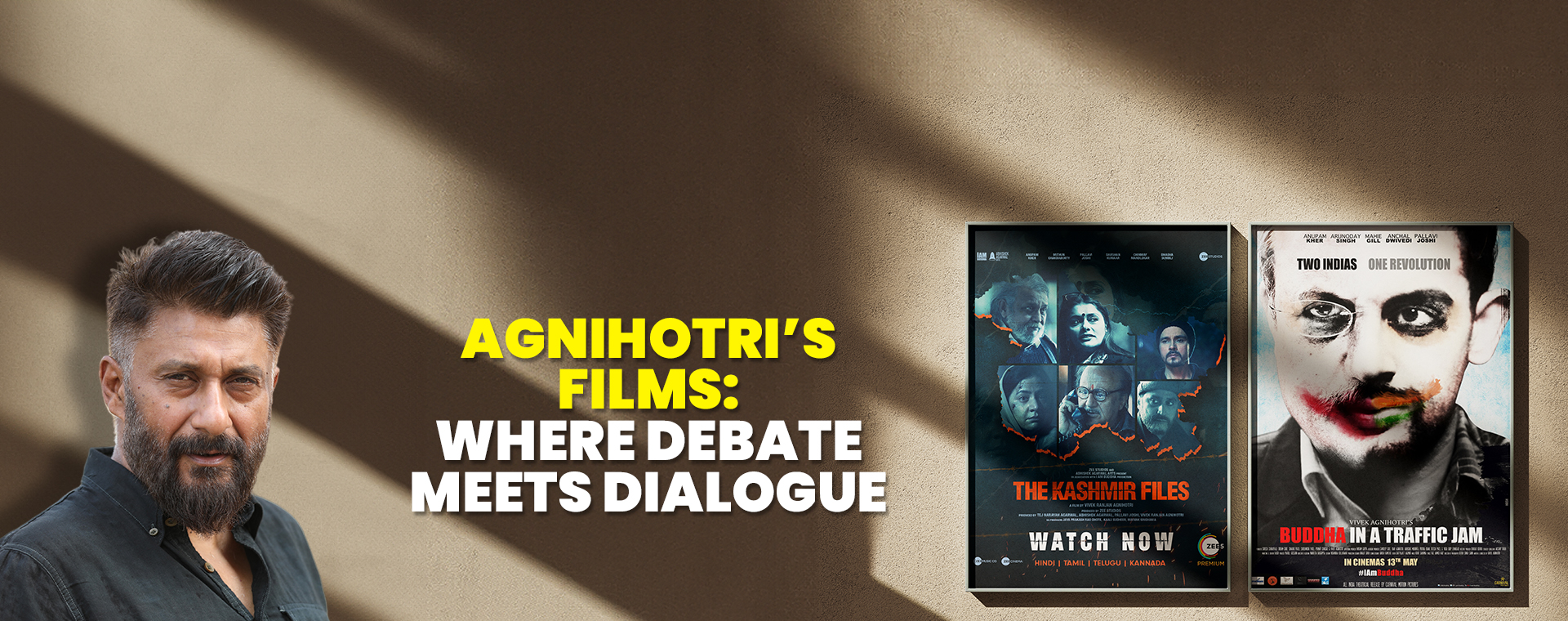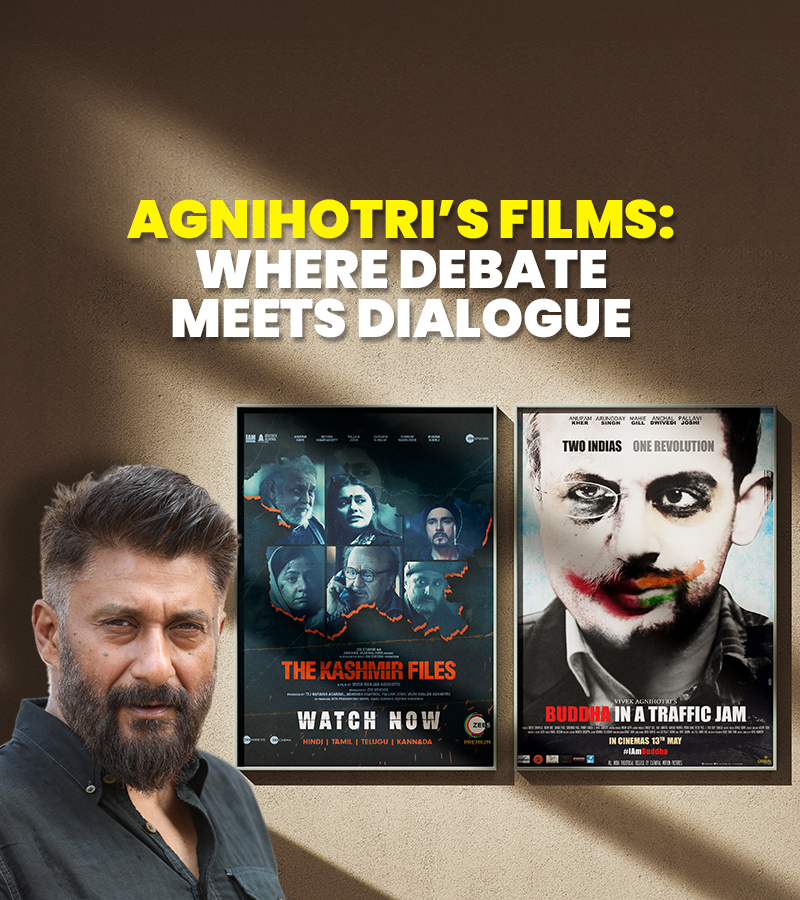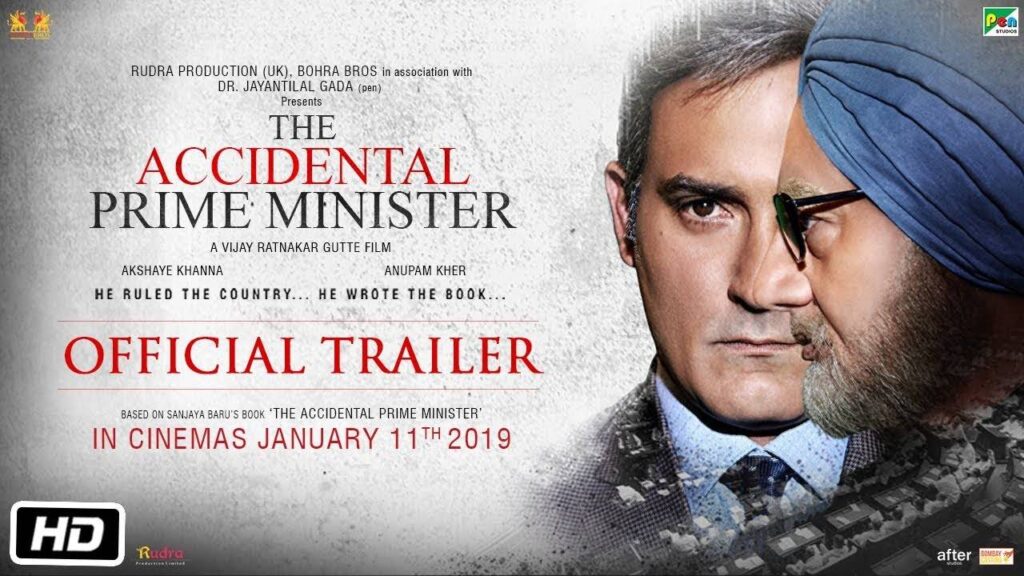

Does Vivek Ranjan Agnihotri’s Cinema Provoke Debate or Foster Dialogue?
Dive into the power of film to challenge, connect, and shape our understanding of the world.
Vivek Ranjan Agnihotri, a name synonymous with brave filmmaking in India, is a master at sparking conversation through cinema. His movies consistently challenge societal norms, ignite debate, and leave audiences thinking about complex social issues. However, a crucial question arises: Do Agnihotri’s films simply provoke outrage, or do they create a space for meaningful film discussion? This blog explores this question within the larger context of cinema’s role in shaping our conversations.
The Spark of Debate: Agnihotri’s Films as Catalysts for Controversy
One needs only to look at Agnihotri’s recent film, The Kashmir Files, to understand its potential to ignite debate. The film delves into the exodus of Kashmiri Pandits from their homeland, a sensitive historical event. Its portrayal sparked passionate discussions, with some praising its courage in confronting a complicated truth and others criticizing its perceived one-sidedness.
This controversy exemplifies the double-edged sword of cinema. While films like The Kashmir Files can bring important issues to light and force audiences to confront uncomfortable realities, they risk being blamed for oversimplification or inflaming existing tensions. The key lies in fostering a space for social commentary that goes beyond initial reactions.
Beyond Black and White: Encouraging Dialogue Through Empathy in Agnihotri’s Work
Despite their potential to provoke, Agnihotri’s films often contain elements that encourage deeper reflection. For example, his social drama Buddha in a Traffic Jam uses satire to critique consumerism and materialism, prompting viewers to question their values and priorities. The film’s strength lies not in providing easy answers but in prompting introspection and film discussions with empathy and a willingness to understand different perspectives. This can lead to a more nuanced understanding of the issues at hand.
Buddha in a Traffic Jam and the Power of Nuance
Buddha in a Traffic Jam follows Vijay, a wealthy stockbroker caught in the relentless pursuit of material success. His life turns when he encounters a mysterious stranger who challenges his worldview. The film doesn’t preach or offer simplistic solutions. Instead, it uses humor and social commentary to spark conversations about materialism, societal pressures, and the search for meaning in a consumerist world.
A film like Buddha in a Traffic Jam entices viewers to think about their relationship with money and success. Some might identify with Vijay’s initial ambition, while others might connect with the stranger’s critique of materialism. The endgame is getting the viewers to understand the film’s themes better and, perhaps, re-evaluate their priorities. This is the power of cinema, fostering dialogue, not just debate.
The Power of Storytelling: Connecting Through Shared Humanity
Vivek Ranjan Agnihotri’s films, even the most controversial ones, can connect audiences through shared human emotions. Whether it’s the sense of loss and displacement explored in The Kashmir Files or the longing for meaning in Buddha in a Traffic Jam, these films tap into universal human experiences.
This strong emotional core allows Agnihotri’s films and cinema to transcend cultural and ideological divides. By sparking film discussions about these emotions, we can build bridges of understanding and create a more empathetic world. Consider, for instance, the portrayal of grief in The Kashmir Files. While the film deals with a specific historical event, the emotions of loss and displacement resonate with anyone who has experienced loss or separation from their homeland.
From Debate to Dialogue: Cultivating Empathy in the Digital Age
In the digital age, where social media amplifies opposing viewpoints and creates echo chambers, fostering meaningful film discussion is more critical than ever. Here are some ways we can learn from Agnihotri’s approach and strive to create spaces for respectful exchange:
- Active Listening: When engaging in film discussions online or offline, practice active listening. Seek to understand the viewpoints of others, even if you disagree.
- Focus on Shared Humanity: Look beyond differences in opinion and focus on the underlying human emotions explored in the film. What experiences or feelings can you connect with?
- Open-Ended Questions: Instead of making declarative statements, use open-ended questions to spark constructive dialogue. What resonated with you most in the film, or how did the film make you feel, are good starting points.
- Respectful Disagreement: It’s okay to disagree with someone’s interpretation of a film. However, express your disagreement respectfully and avoid personal attacks.
The Legacy of Cinema: A Call to Action
Cinema, with its ability to entertain, challenge, and move us, remains a powerful force. And its ability to spark conversation, be it debate or dialogue, is an integral part of its magic. By embracing the power of film to challenge our perspectives, foster empathy, and create spaces for meaningful exchange, we can harness the power of cinema to build bridges, spark social progress, and, ultimately, create a more connected and empathetic world.
The Role of Independent Cinema and Diverse Voices
It’s important to acknowledge the vital role of independent cinema in fostering diverse film discussions. Like many of Vivek Ranjan Agnihotri’s works, independent films often tackle unconventional themes, challenge mainstream narratives, and offer a platform for underrepresented voices.

Source: timesofindia.com
Take, for instance, the film The Accidental Prime Minister, which explores the unlikely journey of a man thrust into the position of Indian Prime Minister. This independent film offered a fresh perspective on a significant political figure. It sparked discussions about leadership and political realities in India.
Supporting independent cinema and engaging with these films can further enrich the conversation and ensure a more inclusive film discussion landscape. By seeking out diverse voices and perspectives, we can better understand the world and the human experience portrayed through cinema.
The Future of Film Discussion: Building Bridges Beyond the Screen
The future of film discussion goes beyond traditional post-screening conversations. Technology presents exciting opportunities to create more interactive and engaging spaces for dialogue:
- Online Forums and Communities: Online forums dedicated to specific films or genres can provide a platform for ongoing discussions and analysis. These forums can foster community among film enthusiasts and encourage in-depth exploration of cinematic themes.
- Interactive Film Festivals: Film festivals can incorporate interactive elements, such as Q&A sessions with filmmakers and workshops that delve into the film’s production and themes. These events can create a more enriching experience for audiences and encourage deeper engagement with the film.
- Educational Resources: Educational institutions and film organizations can develop resources that guide film discussion and analysis. These resources can equip viewers with the tools to engage with films and foster meaningful dialogue critically.
Conclusion: The Enduring Power of Cinema
With its ability to provoke, entertain, and move us, cinema will continue to spark conversation for generations. Whether it’s the thought-provoking films of Vivek Ranjan Agnihotri or countless other works, cinema offers a powerful platform for reflection, debate, and dialogue.
By fostering spaces for respectful exchange, embracing diverse voices, and utilizing the digital age tools, we can ensure that film discussions continue to be a source of growth, empathy, and connection in our ever-evolving world. So, the next time you leave the cinema, remember the conversation has just begun. Engage with others, share your interpretations, and delve deeper into the magic of the films that move us.






